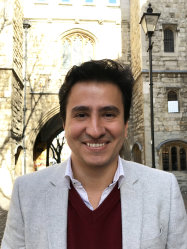BibTex format
@article{Gisriel:2022:10.3390/microorganisms10071270,
author = {Gisriel, CJ and Cardona, Londono T and Bryant, DA and Brudvig, GW},
doi = {10.3390/microorganisms10071270},
journal = {Microorganisms},
pages = {1--19},
title = {Molecular evolution of far-red light-acclimated photosystem II},
url = {http://dx.doi.org/10.3390/microorganisms10071270},
volume = {10},
year = {2022}
}

